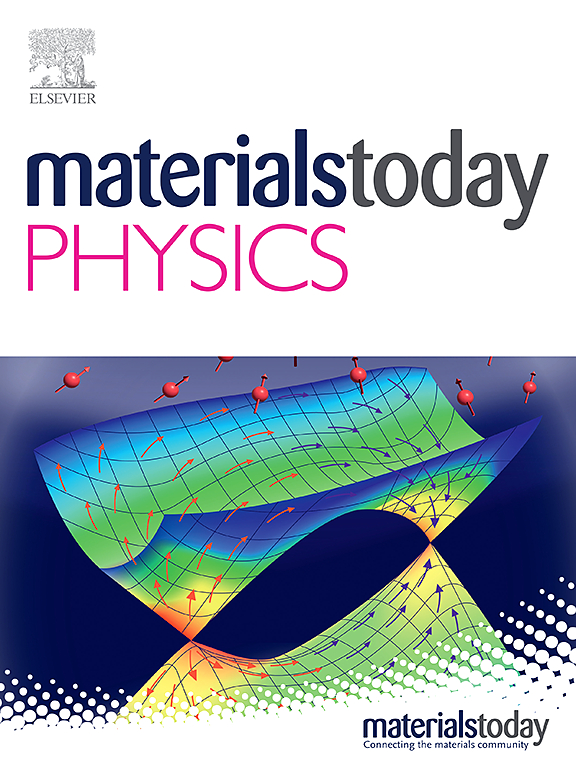通过声子振动模式耦合,抑制Cu0.64Cr1.51Mn(0.85-x)CoxO4的反射带,实现宽带高发射率
IF 10
2区 材料科学
Q1 MATERIALS SCIENCE, MULTIDISCIPLINARY
引用次数: 0
摘要
宽频带高发射材料在热元件的辐射冷却、工业炉的节能、热光伏、光学相机消光等方面具有极大的吸引力。特别是尖晶石陶瓷,由于其优异的红外辐射性能、耐高温性和抗氧化性,是一种令人感兴趣的高发射率材料。然而,尖晶石陶瓷在雷斯特拉赫伦波段的高反射率仍然阻碍了宽带高红外发射率的实现。如何对雷斯特雷仑波段的光响应进行主动调谐仍然是一个难以解决的问题。本文通过固相反应合成了Cu0.64Cr1.51Mn(0.85-x)CoxO4尖晶石,并通过声子振动模式耦合成功抑制了Reststrahlen波段的反射率。cu0.64 cr1.51 mn0.45 co0.04尖晶石在0.25 ~ 25 μm光谱范围内实现了大于0.917的宽带高发射率。该研究为调节Reststrahlen波段的光响应,实现宽带高发射率材料提供了理论指导。本文章由计算机程序翻译,如有差异,请以英文原文为准。
Suppressing reflectance in Reststrahlen bands of Cu0.64Cr1.51Mn(0.85-x)CoxO4 to achieving broadband high emissivity via phonon vibration modes coupling
Broadband high-emissivity materials are extremely attractive in radiative cooling of heat components, energy conservation of industrial furnaces, thermophotovoltaics, and optical camera extinction. In particular, spinel ceramics are intriguing high-emissivity materials due to their excellent infrared radiation properties, high-temperature resistance and oxidation resistance. However, high reflectance in the Reststrahlen band of spinel ceramics still hinders the realization of broadband high infrared emissivity. How to actively tune optical response in Reststrahlen band remains elusive. In this work, we synthesized Cu0.64Cr1.51Mn(0.85-x)CoxO4 spinel via solid-state reaction and successfully suppressed reflectance in Reststrahlen bands by phonon vibration modes coupling. Broadband high emissivity being greater than 0.917 across 0.25–25 μm spectral range is achieved in Cu0.64Cr1.51Mn0.45Co0.4O4 spinel. This study provides a theoretical guidance for regulating the optical response in Reststrahlen band and achieving broadband high emissivity materials.
求助全文
通过发布文献求助,成功后即可免费获取论文全文。
去求助
来源期刊

Materials Today Physics
Materials Science-General Materials Science
CiteScore
14.00
自引率
7.80%
发文量
284
审稿时长
15 days
期刊介绍:
Materials Today Physics is a multi-disciplinary journal focused on the physics of materials, encompassing both the physical properties and materials synthesis. Operating at the interface of physics and materials science, this journal covers one of the largest and most dynamic fields within physical science. The forefront research in materials physics is driving advancements in new materials, uncovering new physics, and fostering novel applications at an unprecedented pace.
 求助内容:
求助内容: 应助结果提醒方式:
应助结果提醒方式:


